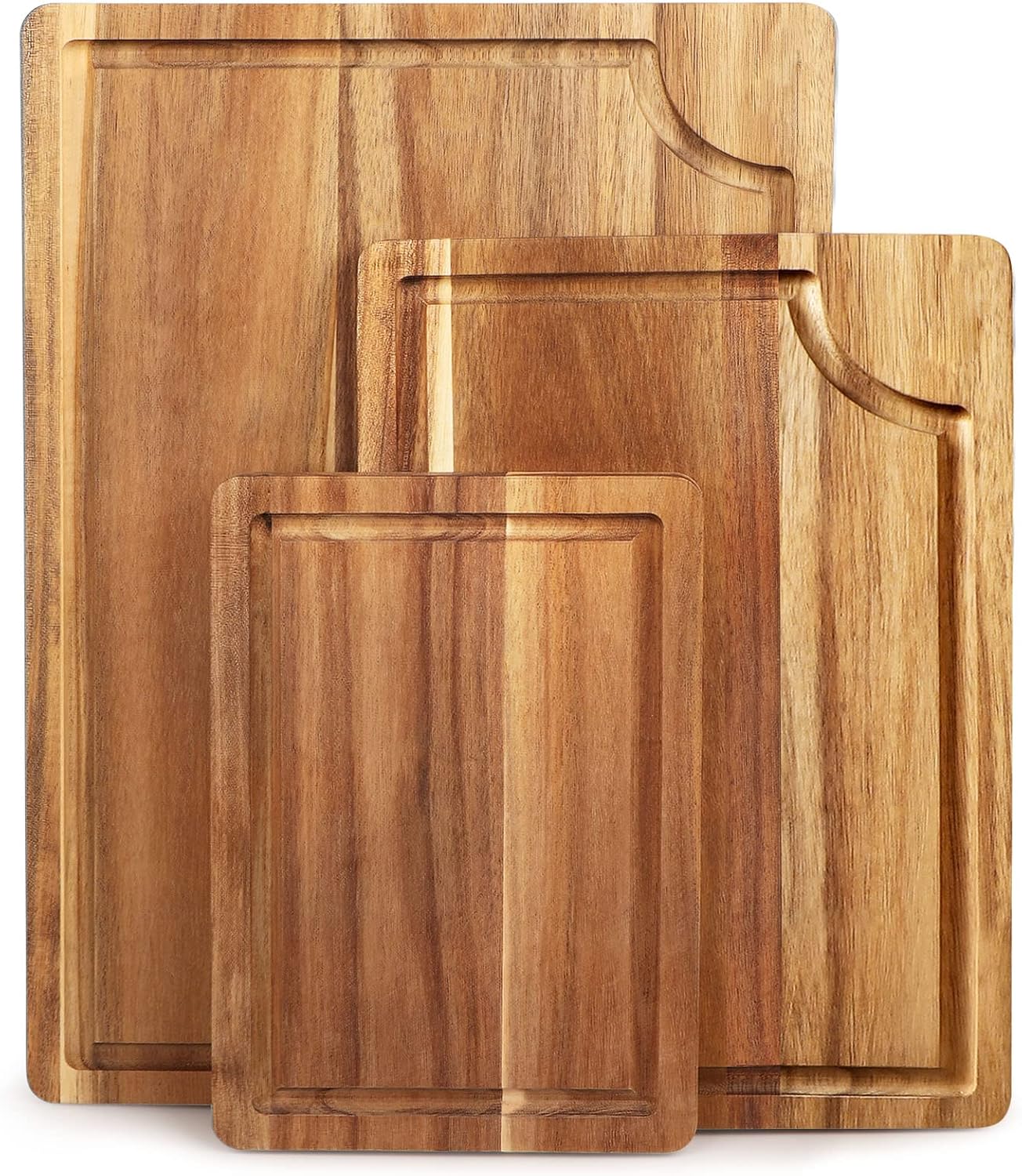






Price: $31.99 - $27.19
(as of Apr 13, 2025 17:30:20 UTC - Details)
The Best Woods for a Cutting Board: An In-Depth Guide
Introduction
When it comes to choosing the best wood for a cutting board, you might find yourself overwhelmed by the options available. A good cutting board is essential for any kitchen, not only to protect your countertops but also to keep your knives in top condition. In this article, we’ll explore the best woods for a cutting board, diving into the characteristics that make each type unique. Whether you're a seasoned chef or a home cook, selecting the right wood can significantly enhance your cooking experience. Let’s get started!
1. Why Choose Wood for Your Cutting Board?
Durability and Longevity
One of the primary reasons people choose wood for a cutting board is its durability. Unlike plastic boards that can warp and dull your knives, wooden boards can last for years with proper care. Hardwoods like maple, walnut, and cherry are particularly noted for their strength and resilience. They can withstand heavy use while maintaining their integrity.
Aesthetic Appeal
Wood cutting boards are not only functional but also add a touch of warmth and beauty to your kitchen. The natural grains and colors of different woods can enhance your kitchen decor. Whether you prefer a light maple or a rich walnut, there’s a wood type to match every style.
2. Maple: The Classic Choice
Characteristics of Maple Cutting Boards
Maple is often regarded as the gold standard for cutting boards. Known for its tight grain and hardness, it provides a smooth surface that’s gentle on your knives. Its light color also makes it easy to see food particles, which is a plus when you're prepping meals.
Maintenance Tips
To keep your maple cutting board in top shape, regularly oil it with food-grade mineral oil. This helps to prevent cracks and keeps the wood hydrated. Avoid soaking it in water or putting it in the dishwasher, as this can lead to warping.
3. Walnut: The Luxurious Option
Why Choose Walnut?
Walnut cutting boards are known for their rich, dark color and striking grain patterns. They are not only beautiful but also incredibly durable. Walnut is a bit softer than maple, which means it’s gentler on your knives.
Care Instructions
Like maple, walnut requires regular oiling to maintain its appearance and longevity. Use a food-safe mineral oil or a specialized cutting board oil. Avoid using harsh detergents, as they can strip the wood of its natural oils.
4. Cherry: The Timeless Favorite
What Makes Cherry Unique?
Cherry wood is celebrated for its warm tones and beautiful aging process. Over time, cherry develops a deeper color, adding character to your kitchen. It’s also a hardwood, making it durable and suitable for daily use.
Proper Care for Cherry Boards
To keep your cherry cutting board looking its best, oil it regularly and avoid exposure to excess moisture. If you notice any stains, a gentle scrub with baking soda can help clean it without damaging the wood.
5. Bamboo: The Eco-Friendly Alternative
Benefits of Bamboo
While not technically wood, bamboo cutting boards have gained popularity due to their sustainability and affordability. Bamboo is highly renewable and grows quickly, making it an eco-friendly option. It's lightweight and offers a unique look that can complement any kitchen.
How to Maintain Bamboo
Caring for a bamboo cutting board is simple. Like traditional woods, it requires regular oiling. However, avoid soaking it in water, as this can cause warping.
6. Teak: The Exotic Choice
Why Teak Stands Out
Teak is renowned for its natural oils, which help resist moisture and bacteria. This makes it an excellent choice for those looking for a low-maintenance option. Its rich color and durability also make it a favorite among chefs.
Caring for Teak Cutting Boards
To maintain the beauty of your teak board, apply mineral oil regularly. Its natural oils make it more resistant to water damage, but it’s still best to avoid prolonged exposure to moisture.
7. Acacia: The Versatile Option
What to Know About Acacia Wood
Acacia is a hardwood known for its unique grain patterns and durability. It’s often used in multi-functional cutting boards that double as serving platters. Acacia’s natural oils also help resist moisture, making it a practical choice.
Maintenance Tips for Acacia
Caring for an acacia cutting board involves regular oiling to maintain its condition. Clean it with mild soap and water, avoiding the dishwasher to prevent damage.
Conclusion
Choosing the best wood for a cutting board ultimately depends on your personal preferences and needs. Maple, walnut, cherry, bamboo, teak, and acacia all offer unique advantages and aesthetic appeal. Remember, proper maintenance is key to ensuring your cutting board lasts for years. By selecting the right type of wood and caring for it properly, you can enhance your cooking experience and add a beautiful element to your kitchen. Happy cooking!
Three Board Sizes: Set includes three acacia wood cutting boards; sizes are 15"x10" for large tasks; 12"x8" for medium chopping; 9"x6" for travel or small tasks
Durable Acacia Wood: Made from 100% acacia wood; known for its strength and natural beauty; resists water and stains; gentle on knife blades
Deep Juice Groove: Features deep juice grooves on all three boards; prevents spills and keeps your countertop clean during food prep
Versatile Use: Suitable as cutting boards or for serving cheese and charcuterie; adds a touch of elegance to any kitchen decor
Perfect Gift Option: An ideal gift for cooking enthusiasts; great for kitchen use
